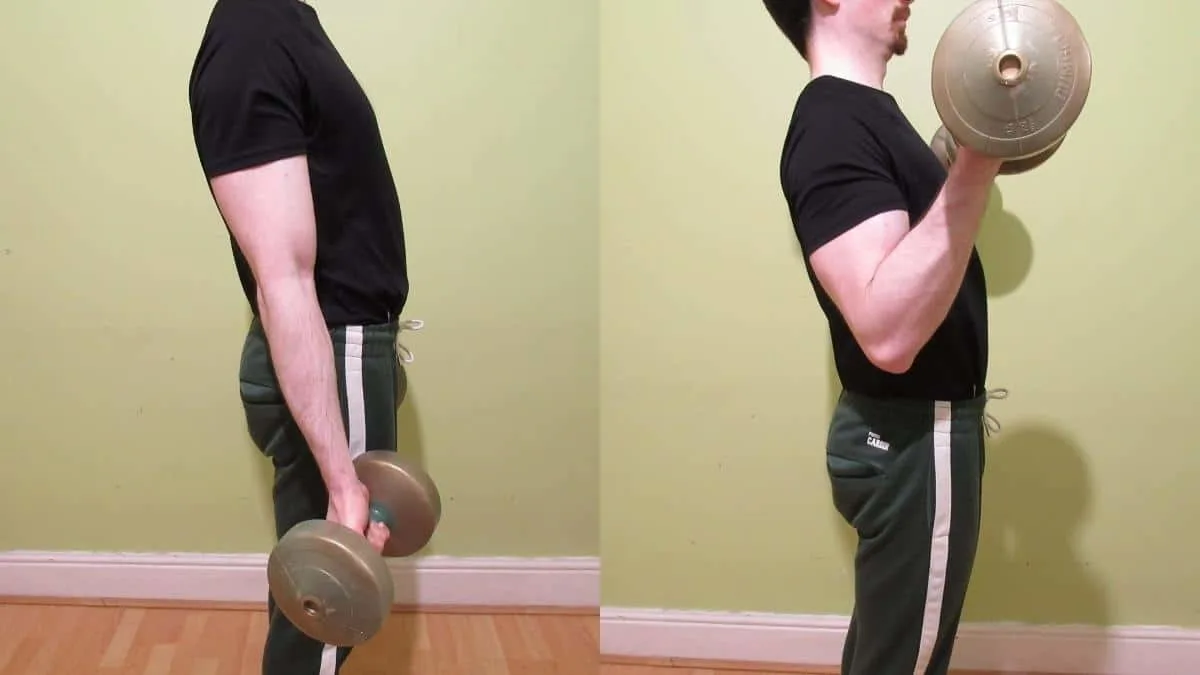The muscles of the forearm are highly active during bicep curls because they need to hold onto the bar or dumbbells that you’re curling. However, as any sports scientist will tell you, muscle activation and muscle growth are two very different things.
But to answer the question, do curls work forearms? Yes, bicep curls absolutely do work the forearm flexors and their surrounding muscles.
Related posts
- Do pull ups work forearms?
- Do pushups work forearms?
- Do deadlifts work the forearms?
- Does bench press work forearms?
How well do bicep curls work your forearms?
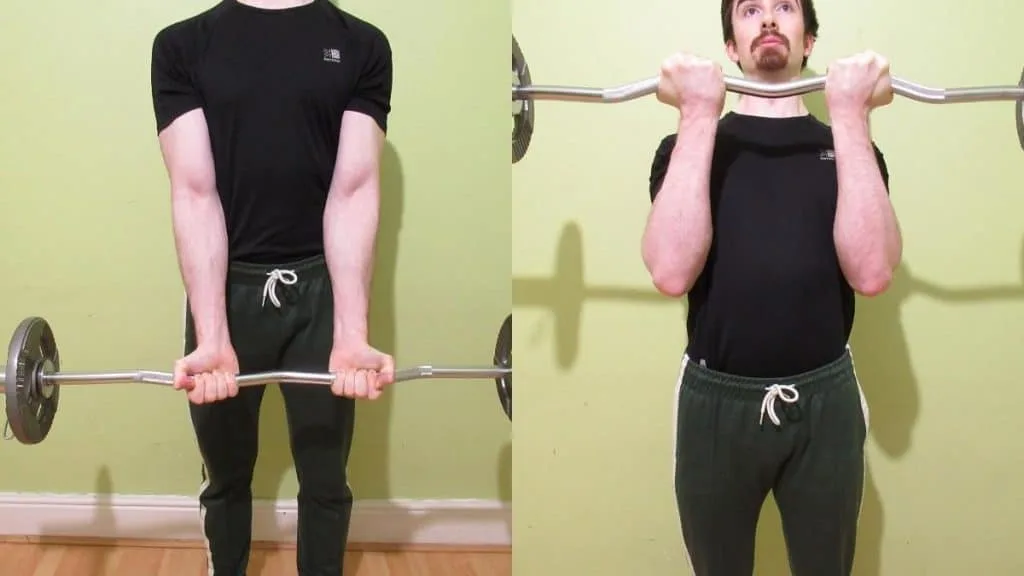
The underside of your forearm (the flexors) gets worked a lot during bicep curls. And while they’re not the limiting factor (at least, they shouldn’t be), they still receive enough stimulus to grow.
However, because your forearms generally don’t give out before your biceps during curls, they never get quite enough tension to reach their full potential. And that’s just for the flexors.
For the forearm extensors, things are even worse. Worse, of course, if you actually want to work your forearms during curls. Anyway, the extensors are only active isometrically during biceps curls.
Isometric exercise still provides a decent workout if you get enough time under tension, but for maximum muscle growth, you’re going to need direct, dynamic training.
Will the forearms grow from curls?
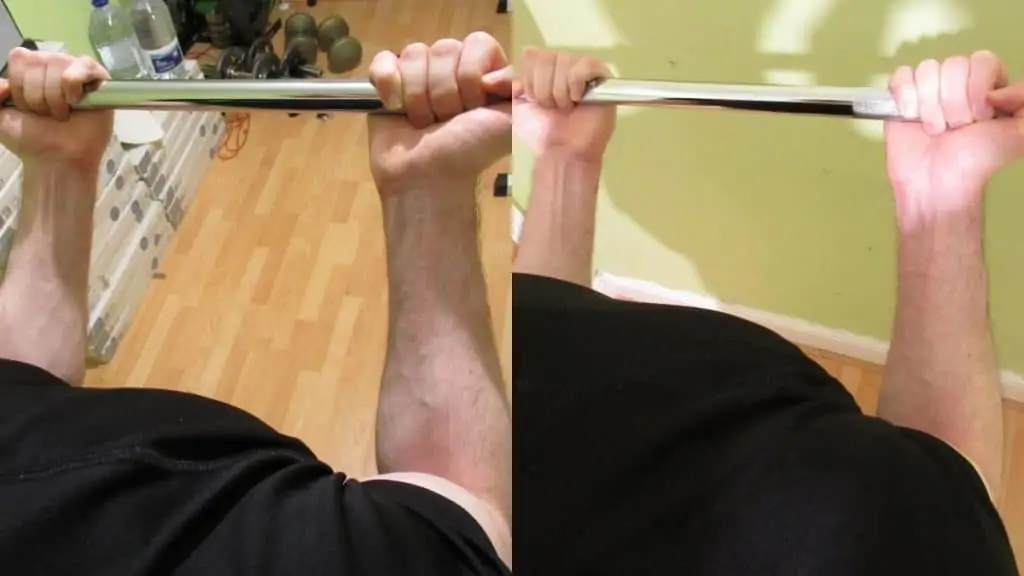
Yes, the forearms can grow from bicep curls, especially if you’re a beginner. The underside of your forearms receives a nice contraction as you curl the weight up and a fairly decent stretch on the eccentric portion of the rep.
Sadly, this isn’t enough stimulation for maximum growth.
If you want the forearms of your dreams, then you need to isolate them with grip exercises and/or wrist curls.
That said, you can absolutely build great forearms from just curls and other compound movements. After all, many people have fantastic forearms, and they don’t even go to the gym. And that’s because simply using your forearms in everyday life can provide some nice gains.
But presuming that you want above-average forearm development, then yes, you’ll need to pick up some weights and perform specific exercises to get in the extra training volume. [1]
How to reduce forearm activation during bicep curls
If you’ve just done a full back workout and are now moving onto curls, then you might find that your forearms are so fatigued that they actually give out before your biceps.
Unfortunately, this scenario leads to underdeveloped biceps because they never receive full stimulation. Thankfully, these 3 tips can help ensure that your forearms are taken out of the movement as much as possible.
Loosen your grip
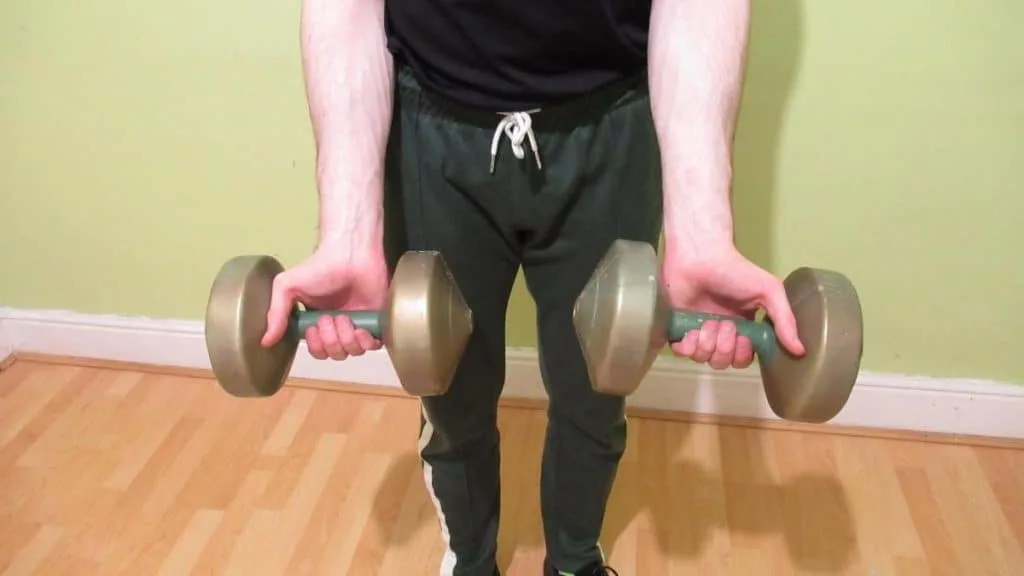
Try this: squeeze your hand as hard as you can, and then hold that contraction for 10-15 seconds.
See, even holding a strong contraction—with no external resistance—for 10 seconds is enough to significantly increase forearm activation. Now just imagine repeating this across 5, 10—even 20 sets.
Exactly, you’ll have a wicked forearm pump, but you’ll barely be able to hold onto the dumbbell for curls.
So, learn to relax your grip. Think of your hand as a mere hook that holds the dumbbell in place. Your biceps should do all of the heavy lifting.
It sounds a bit whacky, but if you mentally think about your forearms relaxing and your biceps contracting, then you can take your forearms out of the movement to a large extent.
Bend your wrists backward
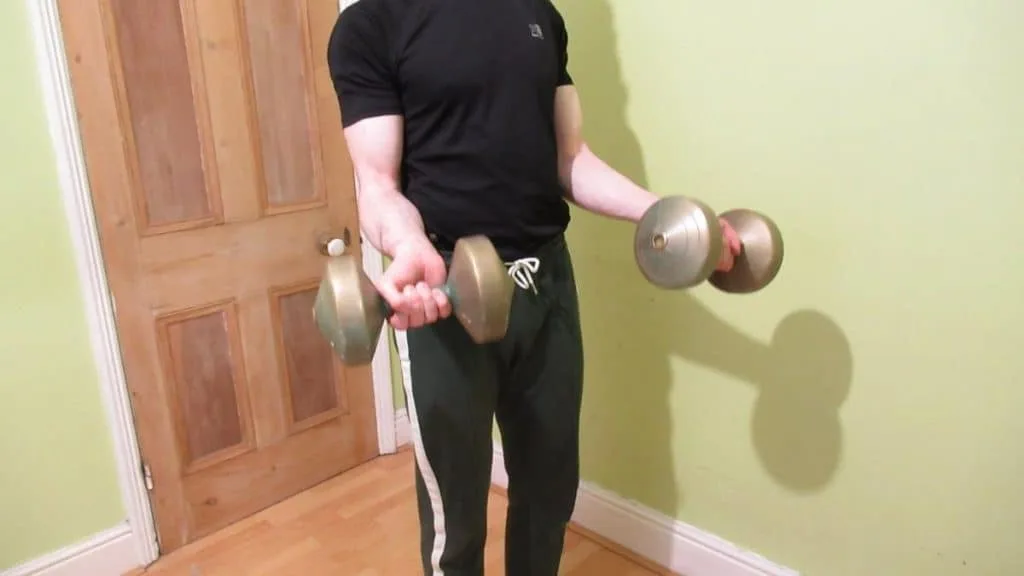
The forearm flexors fatigue much quicker than the forearm extensors during curls (and pulling exercises, too) because they’re your main gripping muscles, which you use to hold onto the weight.
Therefore, by extending your wrist, you immediately reduce the intensity of the contraction in your flexors. This is a massive win because a smaller contraction means less blood gets shuttled into the muscle, which in turn means less lactic acid and, ultimately, less chance of your forearms giving out before your biceps.
But won’t this new form adjustment just start working your extensors more?
To a degree, yes, However, the extensors are barely used to grip objects. Rather, they’re used to release them. So it’s not like they’ll be the limiting factor. And besides, you only need to extend your wrists slightly to get the benefit. The idea is to prevent the flexors from maximally contracting, which you can do with even a modest amount of wrist extension.
Squeeze your biceps harder
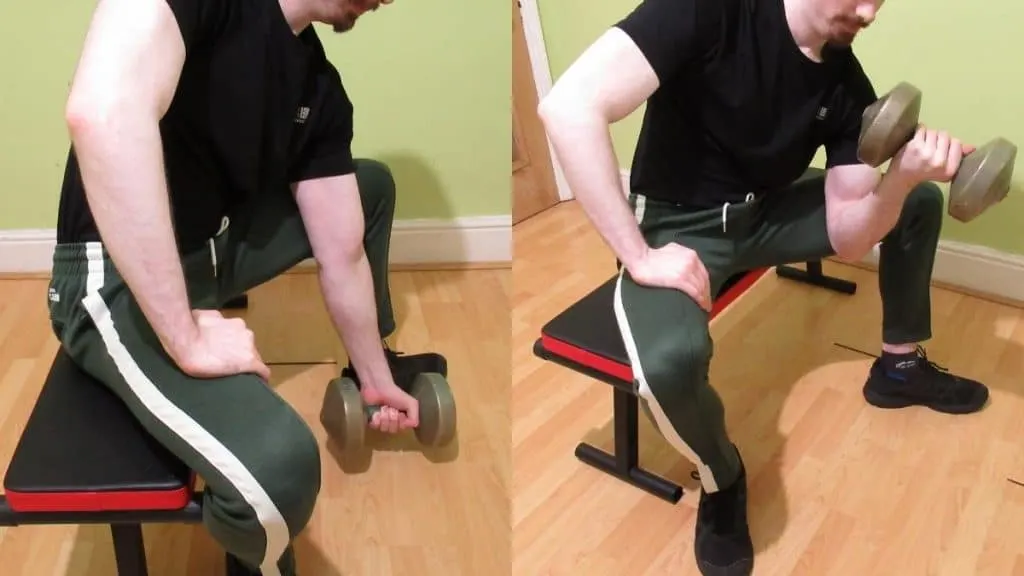
The mind-muscle connection is one reason why bodybuilders typically have more muscle mass than powerlifters. [2] You can use this fact to your advantage during curls.
Think about your biceps stretching and contracting during every rep.
Also, learn to squeeze the muscle hard during the contraction. A split-second pause will not suffice. You need to squeeze your biceps until the sensation becomes borderline uncomfortable.
Then, when you go back to performing regular curls without pauses, feeling your biceps work will be the most natural thing in the world.
The verdict: Do curls work forearms or not?
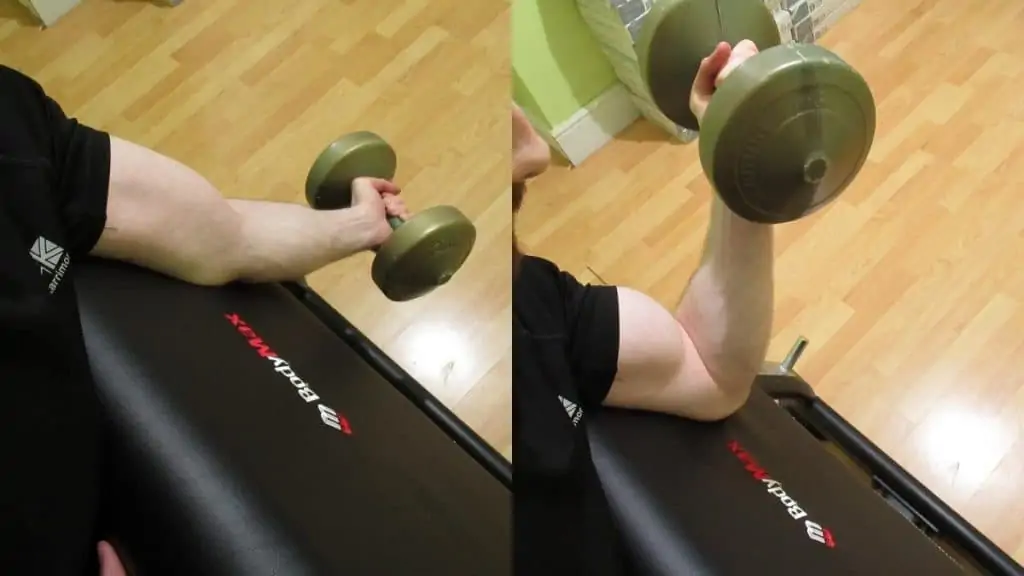
Do bicep curls work the forearms, then? Yes, as we’ve just established, the forearm flexors get worked during bicep curls because they’re required to hold onto the dumbbell or barbell.
Do curls work the forearms well, though? If you’re new to the gym, then yes, curls can work your forearms well and add quite a lot of muscle. But if you’re more advanced, you’ll need to perform specific exercises to get those forearm gains.
But as we also learned, you can employ various techniques to reduce your forearm activation during curls and get a better bicep workout.
References
- SCHOENFELD, B. R. A. D. J., CONTRERAS, B. R. E. T., KRIEGER, J. A. M. E. S., GRGIC, J. O. Z. O., DELCASTILLO, K. E. N. N. E. T. H., BELLIARD, R. A. M. O. N., & ALTO, A. N. D. R. E. W. (2019). Resistance Training Volume Enhances Muscle Hypertrophy but Not Strength in Trained Men. Medicine & Science in Sports & Exercise, 51(1), 94–103. https://doi.org/10.1249/mss.0000000000001764
- Calatayud, J., Vinstrup, J., Jakobsen, M. D., Sundstrup, E., Brandt, M., Jay, K., Colado, J. C., & Andersen, L. L. (2015). Importance of mind-muscle connection during progressive resistance training. European Journal of Applied Physiology, 116(3), 527–533. https://doi.org/10.1007/s00421-015-3305-7

